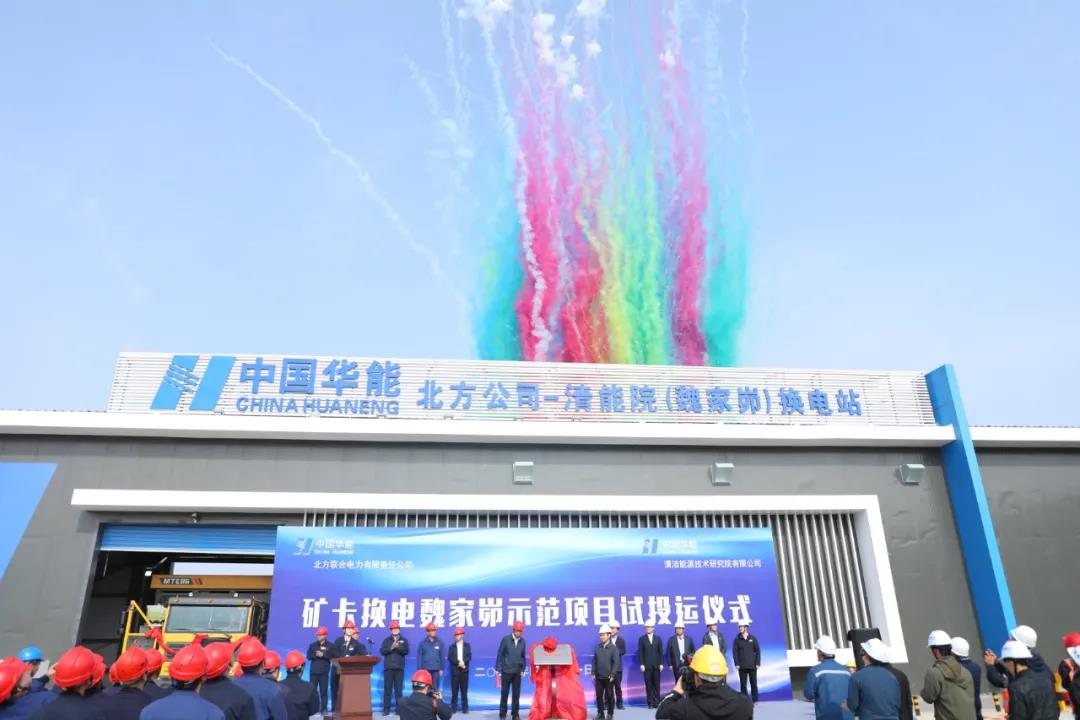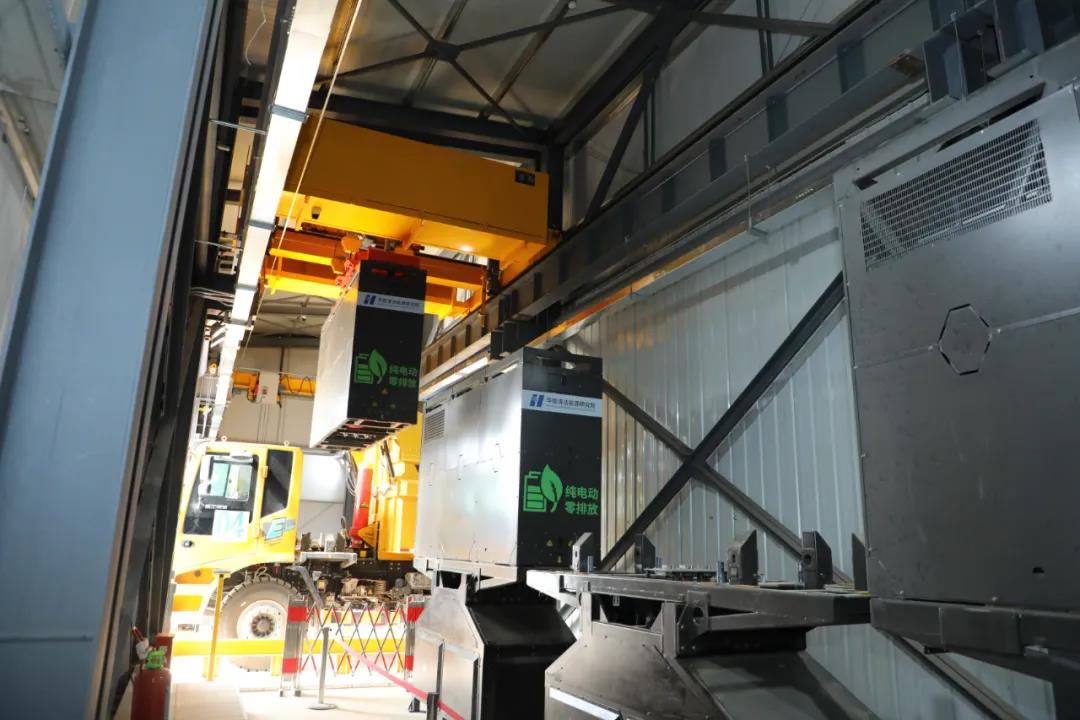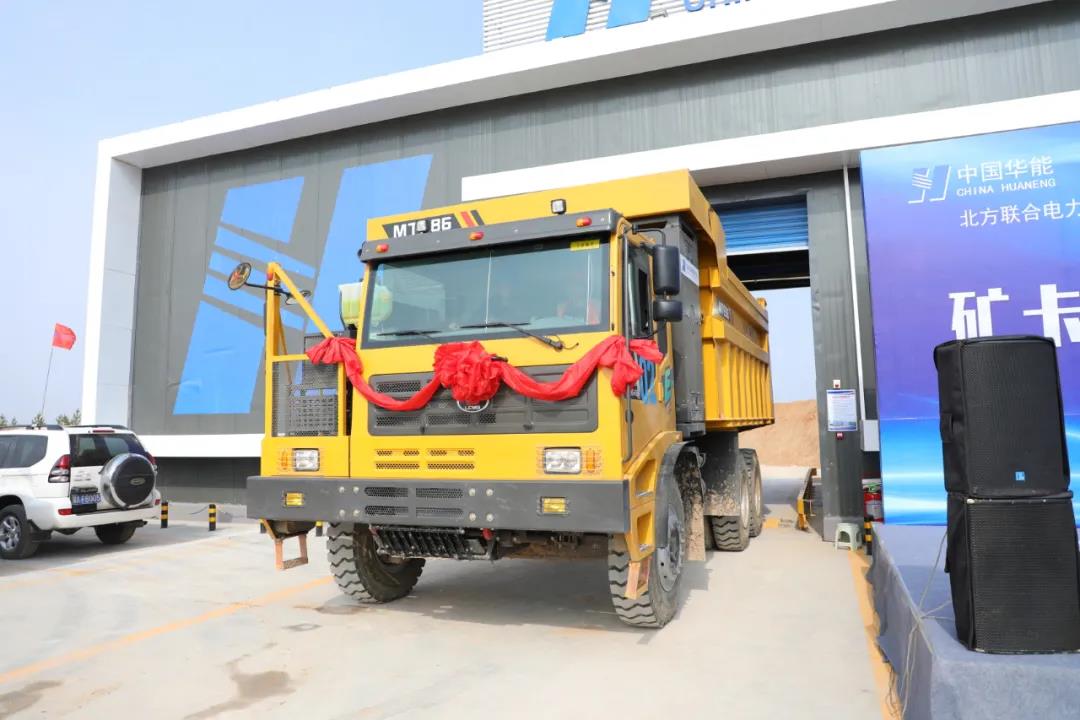Recently, the unveiling ceremony for the country's first flexible hoisting battery swap station for mining engineering equipment—the Huaneng Northern Company - Qingneng Institute Weijiamiao Battery Swap Station project—was grandly held at the Weijiamiao Open-pit Coal Mine. This marks the official operational phase of the Weijiamiao mining truck battery swap project.

At the operational ceremony site
Since the launch of the Weijiamiao mining truck battery swap project in November 2020, construction, installation, debugging, and trial operation have been successively completed according to the planned milestones. As the main equipment component supplier for the battery swapping robot in this project, Bozhon collaborated with the dump-style wide-body battery swapping mining trucks, charging stations, and cloud management system to realize the overall functionality of the project.
The battery swapping equipment provided by Bozhon is used for the fully automatic exchange of batteries between the pre-installed charging base and the mining truck. It adopts a fully automated design, capable of automatically compensating for the corresponding alignment errors, and can achieve unmanned battery swapping through image recognition technology. The battery replacement time is less than or equal to 5 minutes, with a continuous fault-free working time of more than 3000 hours.

At the battery swapping site
BOZHON
How many steps are involved in changing the battery for a new energy mining truck? #The first mining truck flexible hoisting battery swap station in China #Battery Swap Station #New Energy
It is reported that Bozhon received the demand at the end of December 2020, and it took about two months from project initiation to shipment. The equipment was delivered to the Weijiamiao coal mine in Ordos, Inner Mongolia, for installation and debugging in early February of this year. Since it was the beginning of spring, the weather in the north was quite cold, with temperatures dropping to below minus ten degrees Celsius every day. Under such harsh weather conditions, vehicles could not travel back and forth. To ensure the progress of the construction, the stationed engineers and after-sales engineers walked several kilometers in the ice and snow every day for debugging work.
Additionally, the local area experienced severe sandstorms, making the working conditions extremely difficult. However, adhering to the work ethic of "ensuring the completion of tasks without making excuses," the engineers lived up to expectations, working day and night to successfully complete the on-site technical support tasks.

Since Bozhon ventured into the new energy charging and swapping field in 2016, after five years of technological accumulation and innovation, it has developed a complete R&D and manufacturing process, applied for over 300 patents, and established close cooperation with various mainstream automakers. As a provider of comprehensive charging and swapping solutions, its products are suitable for new energy passenger and commercial vehicles. Currently, the number of charging and swapping stations delivered by Bozhon accounts for more than half of the total market volume, receiving unanimous praise from customers in the industry.
The State Council's "New Energy Vehicle Industry Development Plan (2021—2035)" and the "2021 State Council Government Work Report" have successively identified the new energy vehicle battery swapping model as a development focus for the next stage of new energy and new infrastructure industries. Compared with the charging model, the battery swapping model has the advantages of "vehicle-battery separation, cost-saving, convenience, and safety and reliability." At the same time, it does not impose a significant burden on the power grid, does not require capacity expansion, and can make efficient use of electricity through peak-valley electricity policies.
Moreover, compared to fuel-powered mining trucks, electric mining trucks have a very obvious cost-performance advantage. According to statistics, fuel-powered mining trucks consume an average of 800L of fuel per day, with a fuel cost of 4,000 yuan; electric mining trucks have an average daily energy consumption of 2240kWh, with an electricity cost of less than 2,000 yuan. Over a year, just in terms of energy consumption, electric mining trucks can save at least 600,000 yuan. If comprehensive factors such as the convenience of electric vehicle maintenance and mine area electricity prices are included, electric mining trucks can save about 41% of economic costs.

Whether considering national policies or operational costs, the electrification of mining engineering equipment has become a development trend. Bozhon has contributed to the research and development of the first domestically launched flexible hoisting battery swap station for mining engineering equipment. With leading innovative technology, it will boost the electrification of mining vehicles, promoting a harmonious win-win situation between ecological environmental protection and economic growth.